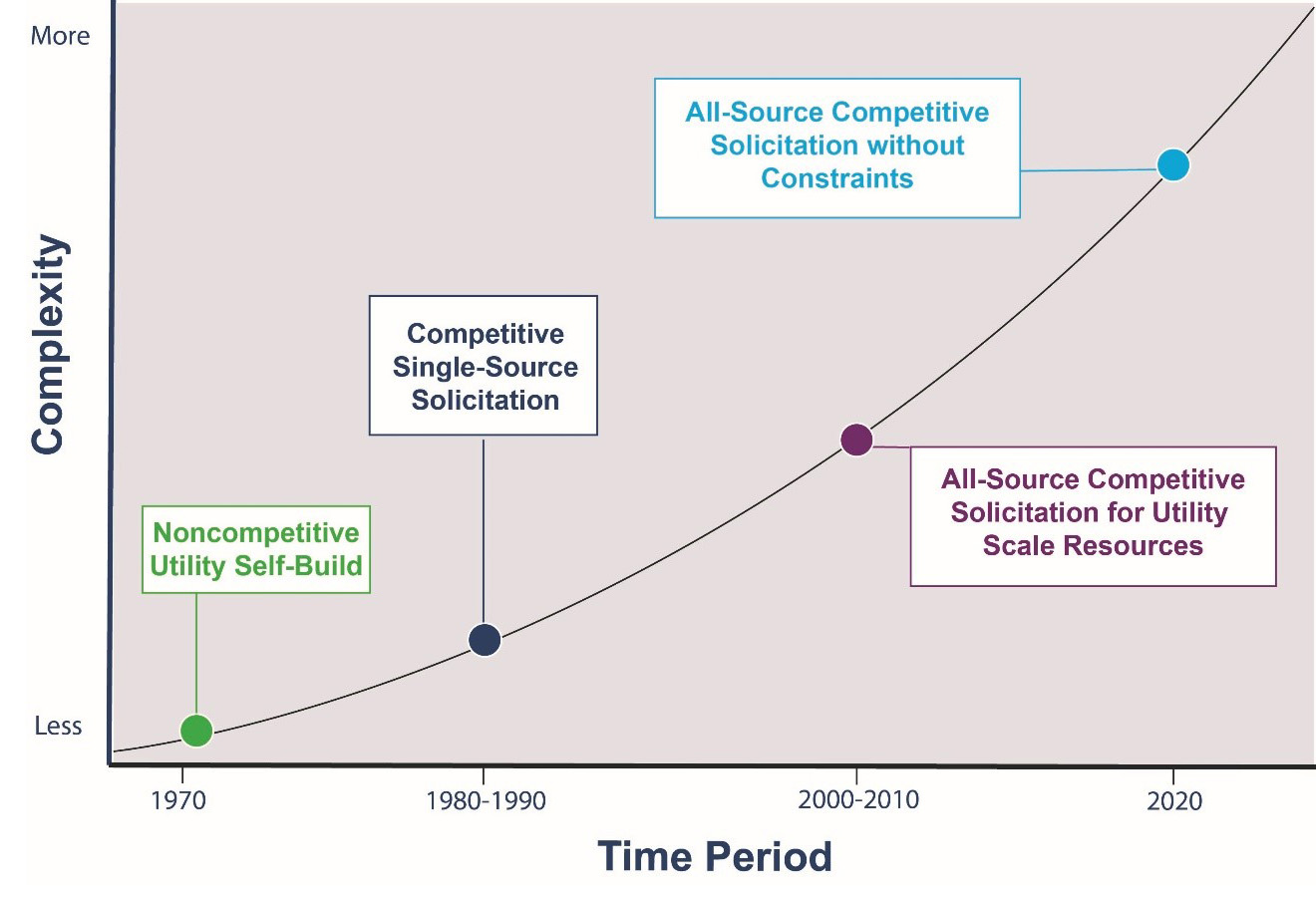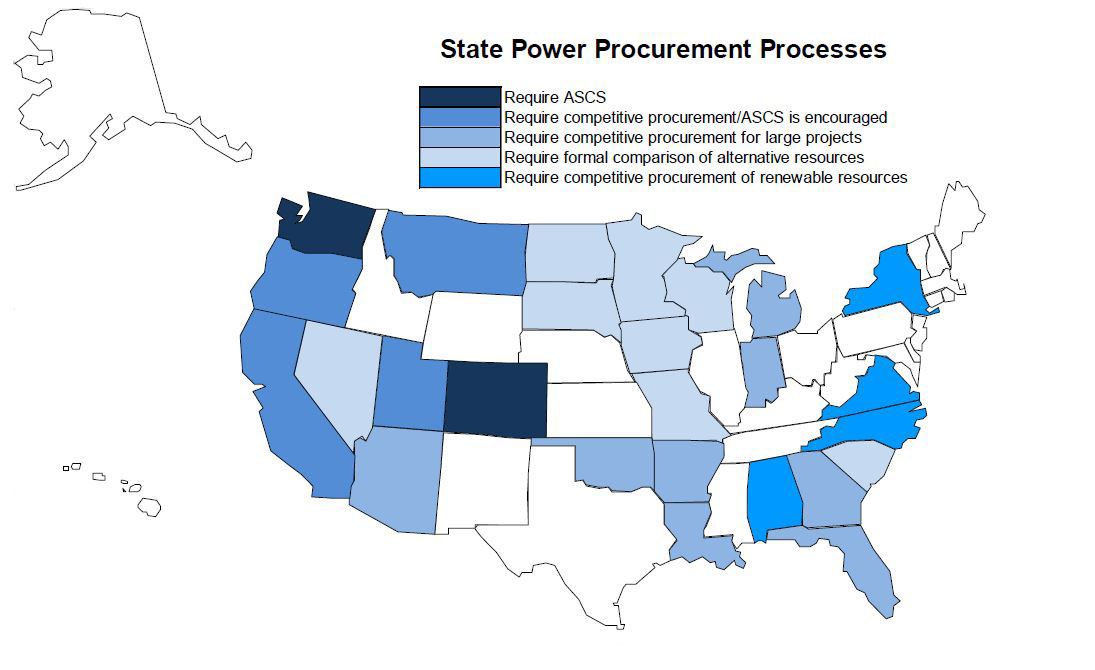The modern utility model is rapidly trending towards decarbonization, digitalization, distributed energy resource adoption and advanced grid technologies, with the end goal of providing more reliable, resilient, and equitable power for customers. An important tool towards this modernization process is the All-Source Competitive Solicitation, which offers utilities an alternative to centralized planning, construction and dispatch of power supplies, and helps to usher in a new era of market-driven technology innovation.
Related Services
A Primer on All-Source Competitive Solicitations (ASCS)
For the first 100+ years of their existence, American utilities operated as classic monopolies, constructing, owning and operating their generation assets. With the passage of the Public Utility Regulatory Policy Act (PURPA) in 1978, regulation was introduced allowing independent power producers to offer alternatives to this centralized generation environment. PURPA ultimately led to accelerated advancement of energy technologies, and by the 1980s and 1990s this progress had evolved to competitive procurement of resources by utilities.
The next step in this evolution began in the 2000s, as state public utility commissions moved away from Single-Source Competitive Solicitations – where the preferred, eligible technology (such as coal, nuclear, or natural gas power plants) is predefined in RFPs as the only technology to be considered – to All-Source Competitive Solicitations (ASCS). The ASCS procurement model is meant to be market-driven and technology-neutral, allowing utilities to bid on technologies that serve their generation needs. With the slowing growth in customer demand that has defined the last decade, many utilities are currently responding to the need to replace aging infrastructure, meet renewable energy and environmental policies, or lessen the impact of changing fuel costs.
Evolution of the Competitive Landscape for Procurement of U.S. Utility Generation Resources

The Role of DERs
All-Source Competitive Solicitations for electricity seek different types of energy resources and technologies, including utility-scale resources and distributed energy resources (DERs), to meet a utility’s overall resource needs.
When looking at a variety of technologies for ASCS, the appropriate metric for economic evaluation in regulatory proceedings is net value, or a resource’s market value and other benefits minus its costs. DERs are particularly unique in offering numerous nonenergy benefits that satisfy many of the drivers behind ASCS efforts. For instance, battery storage offers four types of value or benefits to a utility system: capacity requirements, energy price arbitrage capabilities, ancillary services and resiliency capabilities. When combined with variable resource technologies, such as wind or solar, storage can mitigate limitations imposed by the capacity credit typically applied to renewable resources. Storage is also essential to helping states achieve their environmental or decarbonization goals.
ASCS Opportunities for Utilities
All-Source Competitive Solicitations are designed to be technology-neutral and market-based, allowing utilities to select power resources based on cost-effectiveness and to satisfy complicated market requirements, including environmental and regulatory directives. ASCS is used for a variety of power procurement purposes, including bulk power supplies, system peak capacity requirements, non-wire alternatives and clean energy programs; retiring of coal and nuclear power plants are the source of many large ASCS procurements currently in progress. Associated benefits of ASCS projects include continuous optimization of the resource portfolio, avoidance of stranded assets, and increased resiliency against disasters through increased DERs adoption and technology upgrades.
Currently, two states mandate ASCS in the power procurement process, with a growing majority of states requiring degrees of competitive procurement. As utility capacity and decarbonization goals become more multifaceted and complex, more states are likely to employ ASCS to meet system needs to optimize the ultimate mix of resources to serve their customers while reducing emissions.
Competitive Solicitation Mandates for Power Procurement by State, as of August 2021
To learn more about TRC’s advisory and consulting services for the power industry, including how we support the All-Source Competitive Solicitations (ASCS) planning and evaluation process for utilities, contact advancedenergy@trccompanies.com.




